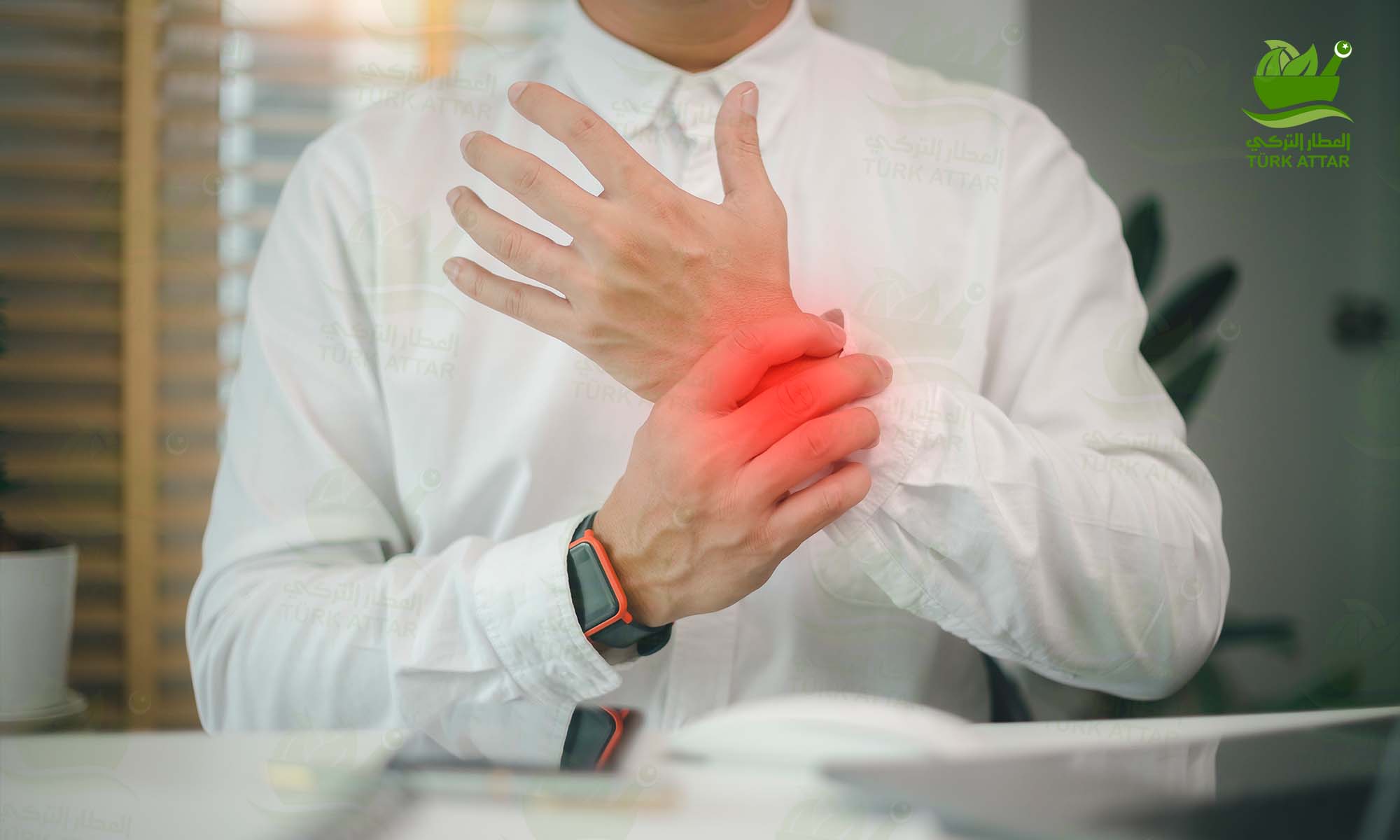
Inflammatory rheumatism, also known as rheumatoid arthritis, is a chronic inflammatory disorder that can damage a variety of body systems in some individuals including the skin, eyes, lungs, heart and blood vessels.
Rheumatoid Arthritis
The belief that very hot or cold weather causes rheumatoid arthritis does not reflect the fact that rheumatoid arthritis is caused by an autoimmune disorder and occurs when an individual's immune system mistakenly attacks the body's tissues, especially the tissues of the joints.
In contrast to the direct damage caused by wear during the calcification process, another type of rheumatoid arthritis is rheumatoid arthritis where rheumatoid arthritis affects the joint membrane of an individual and causes painful swelling that can lead to bone erosion and joint deformity in later stages.
Rheumatoid arthritis is a condition in which inflammation can damage other parts of the body. Although newer types of medication have greatly improved the outcomes of treatment options, severe rheumatoid arthritis can cause physical disability for individuals today.
The reasons:
What causes rheumatoid arthritis?
Rheumatoid arthritis is happening when an individual's immune system attacks the synovium or the lubricating membrane, which is the lining of the membranes surrounding the joints
The inflammation resulting from this attack leads to an increase in the thickness of the synovium and thus the destruction of the cartilage and bone tissue in the joint.
As a result, the tendons and ligaments that hold the joint together begin to weaken and stretch and over time the joint loses its normal shape and position that provides smooth movement.
Although medical professionals do not know for sure the cause of this process, they say that there is a possibility of a genetic factor.
Although genes do not directly cause rheumatoid arthritis, they can make an individual more susceptible to environmental factors such as infection with certain viruses and bacteria that can cause disease and cause rheumatoid arthritis.
On the other hand, non-inflammatory rheumatism usually happens due to bony protrusion due to erosion and thinning of joints as a result of trauma such as falls or accidents.
What factors increase the risk of infection rheumatoid arthritis (inflammatory rheumatism)?
A person's gender plays an important role in increasing the risk of the disease. Women are more susceptible than men to infection.
Rheumatoid arthritis can happen at any age but often appears in middle age and there are also types of inflammatory rheumatism in children.
These types must be diagnosed and treated early because otherwise they may cause damage and developmental delays that may lead to permanent disabilities in the child.
Individuals who are overweight or obese, especially women 55 or younger, have a slightly higher risk of getting than other individuals.
Smoking greatly increases the risk of getting rheumatoid arthritis, especially in cases where there is a genetic predisposition to developing the disease, it has been observed that in individuals continued smoking is associated with the severity of rheumatoid arthritis.
Although the relationship of disease to environmental factors is not clearly understood, it has been noted that exposure to materials such as asbestos or silica may increase the risk of getting rheumatoid arthritis. Individuals who work in workplaces that use such materials are also more likely to get other autoimmune diseases such as rheumatoid arthritis.
Rheumatoid arthritis (Inflammatory rheumatism) and pregnancy:
Depending on the type of inflammatory rheumatism, the damage to the internal organs and the degree of damage it may be inappropriate to become pregnant and it may be possible to allow pregnancy after certain medical examinations during periods when the individuals' disease does not worsen under normal conditions. However, this process should be closely monitored because inflammatory rheumatic diseases depend on the immune system and some types may be exacerbated during pregnancy while others may disappear completely. Due to the long-term effects of drugs used to treat inflammatory rheumatism, they may not be used for a period of time before pregnancy.
Inflammatory rheumatism is not a contagious disease but some substances that can pass from mother to baby may cause some negativity in the first days after birth but this is usually a temporary condition. The fact that parents suffer from rheumatoid arthritis does not inevitably mean that future generations will develop rheumatoid arthritis.
What are the complications of rheumatoid arthritis (inflammatory rheumatism)?
People under the influence of rheumatoid arthritis are at increased risk of getting various medical conditions:
Osteoporosis: Some medications used to treat rheumatoid arthritis can increase an individual's risk of getting osteoporosis, a condition that weakens bones and makes them more likely to fracture
Rheumatic nodules: These hard masses of tissue commonly form around compressed joints such as the elbows. These nodules can occur anywhere in the body, including the lungs.
Dry eyes and mouth: People with rheumatoid arthritis are more likely to have Sjogren's (Sjogren's) syndrome, a disorder that reduces the amount of moisture in the eyes and mouth.
Infections: Rheumatoid arthritis itself and many of the medications used to combat the disease can both weaken the immune system and lead to an increase in other inflammatory infections.
Abnormal body composition: Individuals with rheumatoid arthritis have a higher fat to lean mass ratio, generally even in those with a normal BMI.
Carpal tunnel syndrome: Inflammation in the wrist caused by rheumatoid arthritis can compress the nerves that serve the hand and fingers, causing immobility and pain.
Heart problems: In people with rheumatoid arthritis, it can increase the risk of hardening or blockage of the arteries and inflammation of the sac surrounding the heart.
Lung disease: People with rheumatoid arthritis are at increased risk of inflammation and scarring of lung tissue, which may lead to progressive shortness of breath over time.
Lymphoma: Rheumatoid arthritis increases the risk of getting lymphoma, a group of cancers that develop in the lymphatic system.
Symptoms:
What are the symptoms of rheumatoid arthritis (inflammatory rheumatism)?
The signs and symptoms of rheumatoid arthritis primarily include joints that feel sore, swollen, and hot. In addition, joint stiffness, fatigue, fever, and loss of appetite, which usually worsen after getting up in the morning and after being inactive for a while, are also among the symptoms of rheumatoid arthritis.
In the early stages of the disease, rheumatoid arthritis particularly affects the small joints, the joints that connect the fingers to the hands and toes to the feet.
In the later stages of the disease, signs and symptoms often spread to the wrists, knees, ankles, elbows, hips, and shoulders. In most cases, symptoms occur in symmetrical joints on both sides of an individual's body.
About 40 percent of people with rheumatoid arthritis have signs and symptoms outside the joints. Among the parts of the body affected by rheumatoid arthritis are:
lungs
Kidney
Skin
the eyes
the heart
Blood vessels
bone marrow
nervous tissue
salivary glands
The signs and symptoms of rheumatoid arthritis can vary depending on the condition and its severity, may come and go sporadically, and the condition usually goes through two different periods. The period when the effects of the disease increase is called the period of exacerbation, while the periods when the swelling and pain subside or disappear is called the period of remission.
Rheumatoid arthritis that goes untreated can cause the joints to deform and pop out naturally over time, which is why if there is persistent discomfort and swelling in the joints, you should see your doctor.
Diagnostic methods of the disease:
How is rheumatoid arthritis (inflammatory rheumatism) diagnosed?
It is not easy to diagnose rheumatoid arthritis in its early stages because the early signs and symptoms of the disease often mimic those of many other diseases. In addition, there is no specific type of blood test or physical examination used to definitively confirm the diagnosis.
During the physical exam, the doctor will check the individual's joints for swelling, redness, and warmth. He or she can also check your reflexes and muscle strength. After this stage, a blood test can be done if the doctor deems it appropriate.
In cases of rheumatoid arthritis, an elevated erythrocyte sedimentation rate or C-reactive protein can often be observed, which may indicate an inflammatory case in the body.
Other common blood tests used in cases of rheumatoid arthritis are used to detect the presence of rheumatoid factor and cyclic citrulline peptide antibodies.
Along with blood tests, X-rays can be used to follow the progression of rheumatoid arthritis in the joints over time. Magnetic resonance imaging (MRI) tests and ultrasounds can help a doctor assess the severity of disease in an individual's body.

5 Comment(s)
1
1
1
1
1
1
1
1
1
1
1
1
1
1
1
1
Leave a Comment